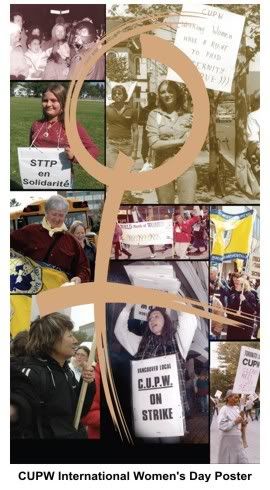Gender equality: Hierarchy of rights or separating state and faith?
 Annie Lessard (a Montreal human rights activist) writes in The Suburban:
Annie Lessard (a Montreal human rights activist) writes in The Suburban:
- That government officials (including teachers) cannot display ostentatious religious signs while at work;
- That the Education Act provides that education policies should emphasize the values of equality between men and women and that these values should not be set aside based on religious or cultural considerations.
Critics of the CSF assert that this is a “hierarchy of rights”, relegating religious freedom to second-tier status, contrary to international law and the Canadian constitution. As for the “hierarchy of rights”, they create a red herring. The international law of human rights establishes an undeniable hierarchy of rights. There are many conventions whose purpose is precisely to fight against the exploitation of women and girls by religious and cultural creeds. As for the Canadian Charter of Rights, it contains a specific provision guaranteeing equality between men and women. This provision is in addition to the provision prohibiting discrimination on the basis of gender. This additional provision (section 28) reflects a Canadian value that is so fundamental that it takes precedence over all other provisions of the Canadian Charter, including those guaranteeing freedom of religion and the promotion of Canadian multiculturalism. Section 28 was added to the Canadian Charter in 1982 at the insistence of women’s groups who were concerned that the new constitutional provision on the promotion of our multicultural heritage should not be used as a legal justification for the unequal treatment of women. Furthermore, section 28 is shielded from the “notwithstanding clause”. No province or the federal government may derogate from it.
Many critics of the CSF position are representative of those cultural relativists and multiculturalists who see in our conception of human rights and secularism an ideological instrument of the West promoting an ethnocentric, neo-colonialist and racist vision of society.
The reality is that a State which promotes gender equality must be consistent in its practices and representations. The veiled teacher promoting the values of equality between women and men poses, both at a symbolic and educational level, a conflict of representations. The underlying message, hidden under the Islamic headscarf, is that of women seen as vile and polluted beings taking moral responsibility for keeping men’s purity in check. We cannot, under the guise of respect for cultural differences and religious beliefs, legitimize inequality and endorse, at the symbolic level, archaic representations of women. For our institutions to accommodate, in the name of multiculturalism, the paradigm of subordination of girls and women or archetypal representations of women as seductive temptresses is tantamount to State-endorsed racism.
The Montreal Multicultural Women’s Coalition may choose to see, in the position of the CSF, a manifestation of the “tyranny of the majority”. But in fact, the ultimate challenge is the protection of our freedoms from the “triumph of the mediocre”










No comments:
Post a Comment